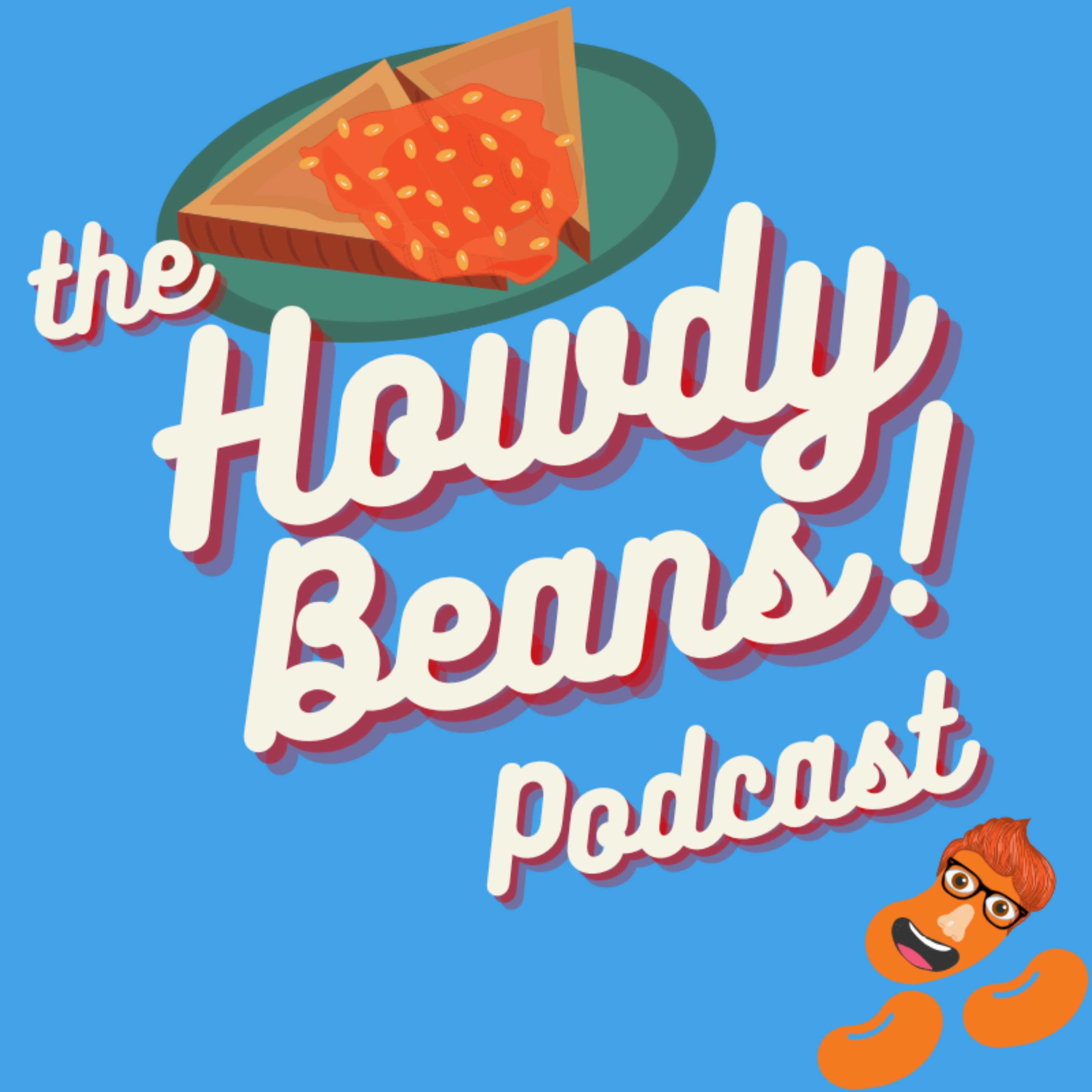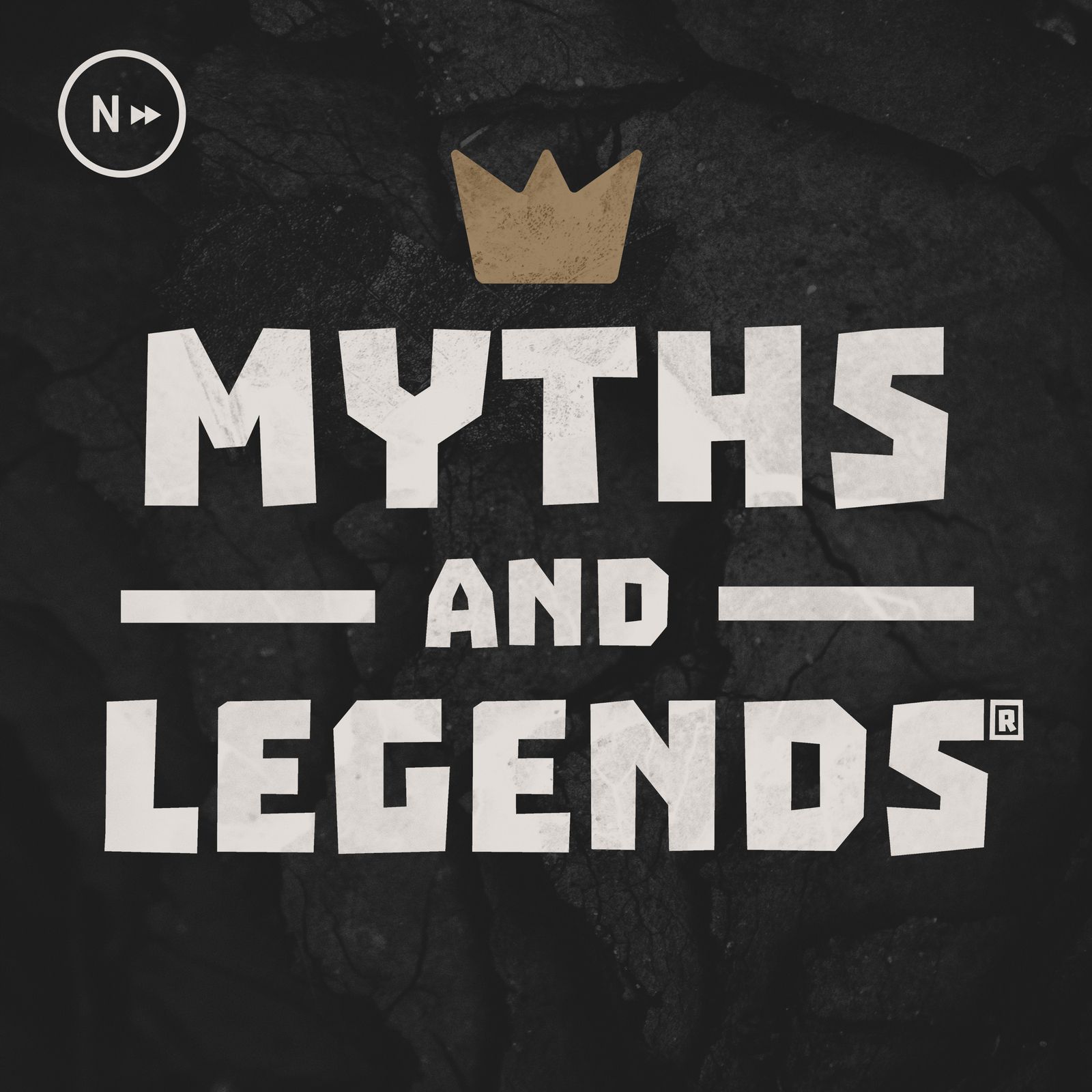
Myth Monsters
A bite sized look into the monsters of global folklore, cryptozoology and mythology with your host, Erin. Jump in and learn about your favourite monsters from Gorgons to Kelpies, to Wendigos to Bigfoot. Stay spooky every Thursday with a new episode with a new monster from another culture. Get in touch on Twitter at @mythmonsterspod
Myth Monsters
Golem
The second of our double feature this week - we're looking into the epic Golem from Jewish folklore for this one! How could you create one of these simple giants? How are they linked to pogroms and Poland during WW2? Find out this week!
You can find us on:
Social media:
INTRO:
Hello and welcome to Myth Monsters, my name is Erin and I’ll be your host for these little snack bite size podcasts on folklore and mythical monsters from around the world.
These podcasts focus on the actual cryptids, folklore and mythic monsters from global mythology, rather than focusing on full stories of heroes and their big adventures.
I’ll also be dropping in some references that they have to recent culture and where you can see these represented in modern day content so you can learn more, and get as obsessed as I am about these absolute legends of the mythological world.
It’s our second episode of our September double feature, just caused by me being a mayhem magnet. Funny story, this week I went to see what I thought was a ballet, but turned out when I got to my seat, it was a breakdancing musical - which was better than the ballet I’m sure - but just a typical thing I would do.
It’s also our last episode before my big September break, and I’m very excited to recharge to give you the best myth monster experience for the rest of the year, but after this, I’ll see ya in two weeks!
DESCRIPTION:
But for now, let’s hop into this week’s monster - this week, we’re not heading anywhere specific, but looking at a religious monster from Jewish folklore, the epic Golem.
The Golem is described as a giant creature made up of a lifeless substance, such as mud, stone, clay or dust to make up a humanoid shape, then brought to life through religious incantations using Hebrew letters. They are usually described as being larger than a usual person, being about 8-10 feet tall in a generic humanoid form with Hebrew letters indented into their foreheads.
Golems are usually mindless and speechless, and are put to a task by their creator, who would mould them out of the substance by hand for their use. They are considered clumsy and logical, so the instructions given to them by their creator must be very exact and without any creative interpretation to avoid the Golem running amok. They were not able to feel emotions, empathy or aggression within folklore either and so were pretty happy obeying their master in any task.
These monsters didn’t have any specific powers other than those given naturally by the substances that they were made from, for instance, if they were made of stone, they were immensely durable and strong - if they were made of clay, they were malleable and able to shapeshift if needed into different sizes and shapes.
Mystics who created these creatures could also give life to other inanimate objects made from these materials, so anything that did come to life, be them humanoid or not, were also considered Golems - although these are not really used in regards to the mythical monster term.
To create a Golem, it was usually a mystic or kabbalist within the Jewish faith, who would use the Golem as an apprentice or assistant in their work. They would gather the substance they wanted to make the Golem from and create the form of it, then they would write the true name of God either on the forehead of the Golem, or they would write it on paper and put this in the Golem’s mouth and dance around it. There were tales that you could write other Hebrew, with the letters aleph, mem, tav, which spell emet and means “truth” to bring the Golem to life.
To destroy a Golem, you would need to erase the letters on their head or remove the paper from their mouth. In the case of the letters I just read you, you would erase the aleph, which would leave mem and tav, which spells met, meaning “death” and would leave the Golem in pieces. You could also walk in the opposite direction of your creation dance saying and making the order of the words backwards.
This was the only way to create and destroy a Golem, and because of their re-animated state, they couldn’t reproduce or eat - they were literally just created to live, work and die, which I suppose is pretty similar to some humans too.
Of course, because of their literal nature - if you did mess up and make instructions ambiguous, Golems would end up obeying the literal meaning. This would lead to chaos and destruction in most cases and would leave the mystic having to
destroy his creation, which did happen in most recorded cases. Because of this though, they have an inherent ‘villain’ stamp on them, but they didn’t feel or have any emotions, meaning that they did nothing with any evil intent and to mark them a villain would be technically incorrect.
ORIGIN:
Their etymology is super interesting because there are a few different ones. Golem is a Hebrew word meaning shapeless mass, but in the Talmud, one of the Jewish texts, the word is used as unformed or imperfect. Interestingly, it also refers to Adam, the first man as Golem for the first 12 hours of his life and this referred to the meaning ‘body without a soul’.
So long story short, Golem literally means ‘shapeless mass’ but is also used for imperfect, body without soul and unformed too - which I think is pretty cool. Either way though, it’s a Hebrew word. What is funny and lasts outside of the Jewish faith, is that someone who is large but is also dumb can be called a Golem - and I plan on using that on my dad at some point.
The Golem’s history goes back to early Judaism, which dates all the way back to 600 BC and is written about in the Talmud, which I mentioned in the etymology section. But in this, the first mention of them is with Adam, who was described as that Golem of body without a soul when he came to being, as he was dust and then kneaded into a shapeless husk, and initially, couldn’t speak either.
However, the earliest mention of forming a Golem was within the Book of Formation, which is a book on Jewish mysticism, but we’re not entirely sure when this was written and it was a little bit vague. However, this was followed by the Sodei Razayyah, another book written by a Kabbalist in the 12th and 13th centuries, describing the full process of creating a Golem and getting it to work with you.
The oldest story of Golems comes from a Polish Kabbalist from 1630-1650, who reported the creation of a Golem by Rabbi Eliyahu, who was the Rabbi of Chelm in Poland between 1550 and 1583. It was written in this text that the Rabbi had created a Golem and I actually have an extract for you;
"And I have heard, in a certain and explicit way, from several respectable persons that one man [living] close to our time, whose name is R. Eliya hu, the master of the name, who made a creature out of matter and form and it performed hard work for him, for a long period, and the name of emet was hanging upon his neck until he finally removed it for a certain reason, the name from his neck and it turned to dust."
With this Golem, it actually grew larger and larger with each task it did, and the Rabbi feared that he would destroy the universe - therefore he destroyed it and the Golem injured him when it fell, causing him to have a large scar on his face.
The most famous Golem story is that of the Golem of Prague. Another Rabbi, Rabbi Loew created a Golem out of the clay from the banks of the Vltava River. The story goes that Rudolf 2nd, the Holy Roman Emperor was expelling or killing the Jewish community throughout Poland, and so Rabbi Loew created it to defend the Polish ghetto from antisemitic attacks and pogroms. The Golem was called Josef and was able to make himself invisible and summon dead spirits. Loew would deactivate the Golem every Friday evening before Sabbath so that it would rest, however, one Friday, he forgot.
There are two tellings of what happened that fateful day, but both end in murder. In one, the Golem falls in love but then is rejected and goes on a murderous rampage, and the other tells that the Golem just goes on that same murderous rampage without the falling in love bit. The Rabbi manages to pull the shem (or the paper with the name of God on) from the Golem’s mouth in front of a synagogue, and Josef fell to pieces. His body was stored in the attic of the synagogue and rebuilt, ready to be reused if needed. Rabbi Loew forbade anyone from going into the attic, and eventually one of his successors braved going up after a day of religious preparation, and at the top of the stairs, ran back down terrified - shouting the warning from Rabbi Loew once again.
According to legend, the Golem is still in that synagogue’s attic, however, this was checked out in 1883 and there was no sign of it. Some tales tell that it was stolen and buried where the Zizkov Television Tower now stands, and a more recent legend tells that a Nazi agent was killed by Josef when breaking into the attic when storming the synagogue during WW2.
The Golem is a representation of a blessing and curse, and that sometimes, the power to create life should remain in the hands of God. They are often linked to villainy as I mentioned earlier because of this, as life is only gifted in religion from either God or the Devil, and unfortunately due to anti-semitism during the time of the Golem’s introduction into folklore, means that they often got linked to the Devil and negativity. However, just based on the Golem of Prague’s story, you can see that they were mainly portrayed in a positive way within the Jewish faith itself, and could even be considered a hero.
There’s a really cool other mythical comparison to this with the Clay Boy, from Yiddish and Slavic folklore, which is a Golem and Gingerbread man crossover. This monster is created to serve as a solution for infertility and creating your own child, usually with disastrous endings - unfortunately, there’s not much else on this, so I most likely won’t be able to cover it.
The other mythical comparison I can think of is actually man itself within Greek mythology. In Greek mythos, man was created from clay by Prometheus, the son of the King of the Gods, Zeus, and breathed life into by Athena, goddess of wisdom. Prometheus then decided to give humans the gift of fire and Zeus was annoyed at that, so decided to punish him for the rest of time by sticking him to a rock with an eagle eating his regenerative liver forever. But sounds Golem-ish right? Maybe we’re all Golems in reality.
CULTURAL SIGNIFICANCE:
Now onto modern media, Golem’s are really prevalent within media so we have a load this week that I’m super excited to tell you about.
For art, portrait wise, have a look at Rabbi Loew and Golem by Mikoláš Aleš from 1899 & The Golem – Prague Fantasies by Hugo Steiner-Prag from 1916 or the movie poster from Der Golem from 1920. Otherwise, independent art is pretty good for this monster, so go check those out too!
You can also see an actual Golem at Madame Tussauds in Prague, which was made for the Der Golem film back in 1920 and is pretty cool. You can also get figurines of little handmade ones at certain tourist attractions in Germany, Poland and in the Czech Republic too, if you wanted your own mini one.
In movies, we have; The Limehouse Golem, The Golem and the Dancing Girl, Der Golem, An American Tail, The Golem (1915 & 2018), The Scorpion King, Golem, The Keep, It!, Inglorious Bastards, Daimajin, Atlantis: The Lost Empire, The Real Shlemiel & Emperor and the Golem.
For TV, we have; The Simpsons, Extreme Ghostbusters, The Magicians, Batman Beyond, Gargoyles, The Sopranos, Huntik: Secrets and Seekers, King Arthur & The Knights of Justice, Legend Quest, The X-Files, Supernatural, The Jews are Coming, The Order, Super Sentai Power Rangers, Grimm, Berserk, Digimon, Fairy Tail, Broken Blade, Legacies, Monster Soul & Delicious in Dungeon.
In video games, we have ones such as; World of Warcraft, Timesplitters 2, Mother 3, Path of Exile, Neverwinter Nights, Legend of Mana, Fallen London, Elemental - War of Magic, Castlevania, Dark Souls, Ancient Empires, Devil May Cry 2, Warcraft 3, Baldur’s Gate, Child of Light, Ancient Domains of Mystery, Final Fantasy, Guild Wars, Fate/Grand Order, Disgaea, Minecraft, Nethack, Metroid Prime, Diablo 2, Might and Magic, Last Armageddon, Dragon’s Dogma, Dragon Age, Legend of Zelda, Elder Scrolls, Dragon Quest, Kingdom of Loathing, Pokemon, Sonic the Hedgehog, Spyro the Dragon, Terraria, Soul Series & The Witcher.
My book recommendation this week is for The Golem: A Man Made of Mud by Shmuel Erez Samson for more on this specific monster and if you have little ones who want to learn more about this one, there’s also Too Many Golems by Jane Yolen and Maya Shleifer.
DO I THINK THEY EXISTED?
Now it’s time for, do I think they existed?
Do I think they physically existed? Yes, more than likely I think someone has created a giant clay bloke and attempted to do a Frankenstein on it - however, do I think the spiritual entity exists? Probably not.
Hear me out - I get that there’s magic involved here, and that is inherently the problem. I’m not a part of any main religions, but I do feel like the power to give life is inherently playing God - and I don’t think any powers that be would allow us as humans to just pick and choose what we give life to.
This is what makes Mary Shelley’s Frankenstein so much fun sci-fi power, that this just doesn’t work in reality. Yes, you can get a frog to move its legs after death, but there’s not much evidence that you can bring an inanimate thing to life I’m afraid, as much as I want to craft a mini Golem to do my dishes for me and shout IT’S ALIVEEEE as it comes into consciousness.
I do love this monster though, and I like the whole good vs evil argument here too, it’s a really unique monster that has two sides to it depending on if you’re part of the faith it comes from or not.
But what do you think? Did Golems run amok after their hectic creation? Let me know on Twitter!
OUTRO:
A legendary monster this week that I’m so glad we got to cover and one that I misjudged as a much more boring monster than I thought, so I enjoyed learning about this one and I hope you did too!
I’m off now for the next two weeks for my annual September break, and I’m grateful for you all for bearing with me but I need a little TLC to recover from my horrendous burnout too. It’s been a really busy year, and I’ve had a lot of mini breaks and late-published episodes recently because of this, so hopefully this gives me some time to catch up and refresh for you all.
So we’ll be back on Thursday 3rd October and we’re heading to all of the Spanish speaking nations around the world for a variety of naughty, but sometimes helpful household creatures, the Duende. Get ready for some mischief when we’re back with these little monsters on the 4th October!
For now, thank you so much for listening, it’s been an absolute pleasure. If you enjoyed this podcast, please give it a rating on the service you’re listening on - I’ve got the twitter for any questions, or suggestions on what monsters to cover next and I’d love to hear from you. The social media handles for Tiktok, Youtube, Threads and Instagram are mythmonsterspodcast, and twitter is mythmonsterspod. But all of our content can be found at mythmonsters.co.uk, including some very cool merchandise - you can also find us on Goodpods, Buymeacoffee and Patreon if you want to help me fund the podcast too.
Come join the fun though and share this with your pals, they might love me as much as you do.
But for now, stay spooky and I’ll see you later babes.
Podcasts we love
Check out these other fine podcasts recommended by us, not an algorithm.

FolkLands
Tim Downie, Justin Chubb
Chatsunami
Satsunami
The Howdy Beans Podcast!
Luke The Elder Bean!
My Brother, My Brother And Me
The McElroys
Myths and Legends
Jason Weiser, Carissa Weiser, Nextpod
Lore
Aaron Mahnke
Exploration: Dreamland
Exploration: Dreamland
The Neatcast
Jeremy, Zack, Mike
Effin' Cultured
Bobby, Griff, and The Rik
